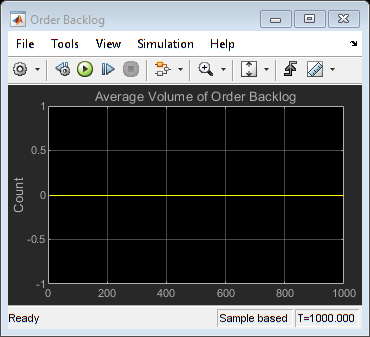资源池
池实体资源
- 库:
SimEvents /实体管理
SimEvents
描述
的资源池块定义实体在模型模拟过程中可以使用的资源。使用资源收购方而且资源发布人块来处理这些资源。
用指定数量的可用资源初始化块。然后:
Use one or more资源收购方blocks to reserve those resources.
使用一个资源发布人块将资源返回给此块以供将来使用。
You can determine the visibility of available resources in a model hierarchy.你可以选择全球或作用域resources in the pool.
全球-资源可以从模型层次结构中的任何位置引用。作用域— Resources are locally visible and can be referenced only from the subsystem that contains the资源池块和里面的所有子系统。
港口
输入
输出
参数
模型的例子
版本历史
介绍了R2016a



